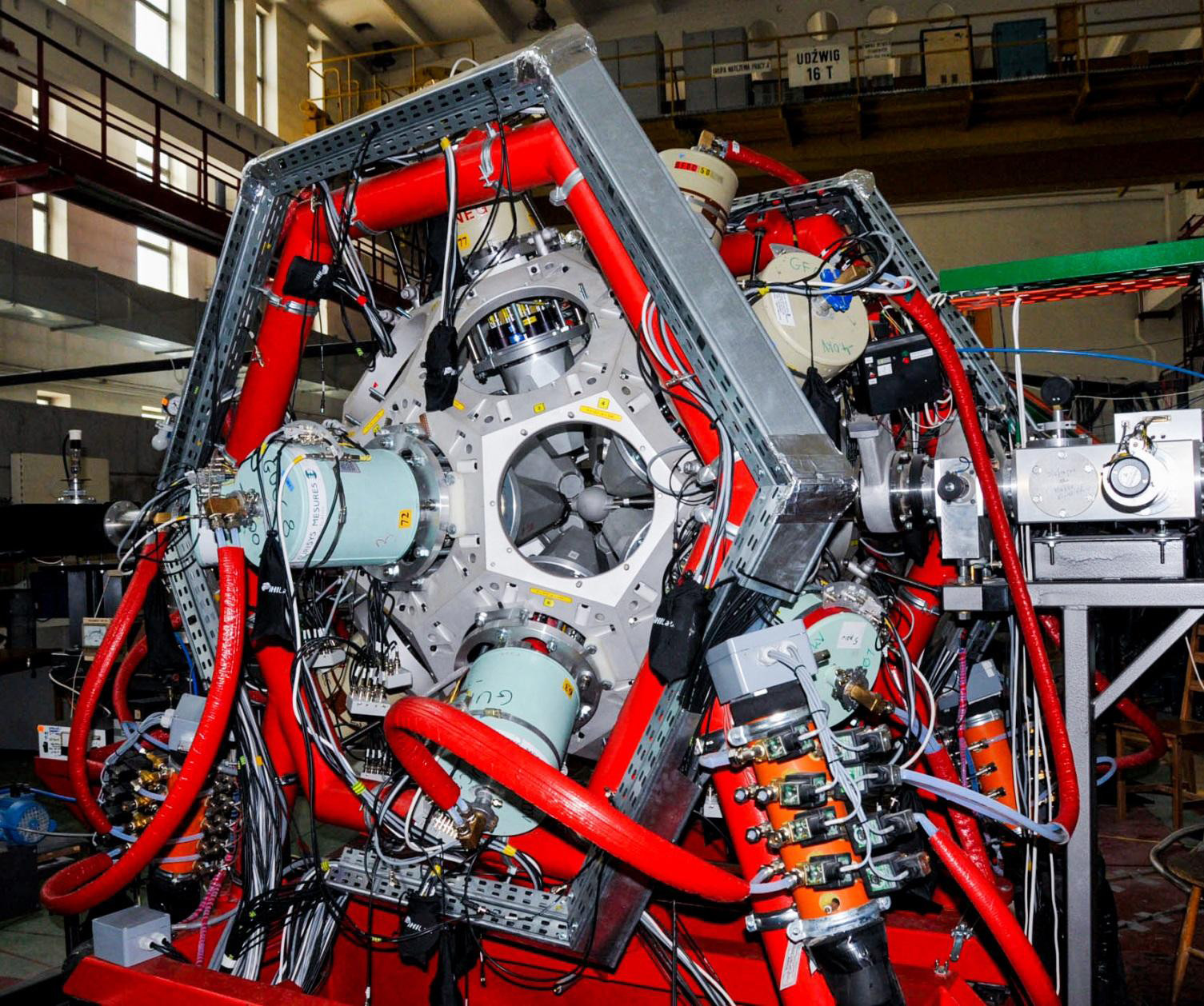EAGLE
The EAGLE array (central European Array for Gamma Levels Evaluations) [1] is a multi-configuration detector setup at HIL which can accomodate up to 30 High Purity Germanium (HPGe) detectors in anti-Compton shields, and various ancillary devices. The cornerstone of HPGe detectors used at HIL are detectors on loan from the GAMMAPOOL, a body which owns a pool of HPGe detectors which are shared among different European laboratories. At the moment 17 HPGe GAMMAPOOL are allocated to HIL.
The frame of EAGLE has a shape of a truncated icosahedron. Its 20 hexagonal faces form 4 rings at the θ angles with respect to the beam axis of 37°, 79°, 101° and 143°, whereas the 10 pentagonal faces form two rings, at θ angles 63° and 117°. There are 5 faces in each ring. Each face can accommodate one High Purity Germanium detector with an anti-Compton-shield (ACS), or other devices. The remaining two pentagonal faces are used for beam inlet and outlet.
The photopeak efficiency of GAMMAPOOL HPGe detectors mounted in the EAGLE frame is approximately 0.1% per detector, assuming the minimum possible detector-target distance.
The HPGe detectors of EAGLE can be used together with various ancillary detectors. The following devices have been used or can be used with EAGLE:
- electron conversion spectrometer;
- Coulex scattering chamber;
- a plunger;
- charge particle veto detector CUP;
- fast scintillators.
In 2022 the NEDA neutron detection array was installed at HIL and it is used with EAGLE as a neutron multiplicty filter see the NEDA-EAGLE page for more information.
EAGLE reference paper:
[1] J. Mierzejewski et al. Nucl. Instr. Meth. A659, 84, (2011)


